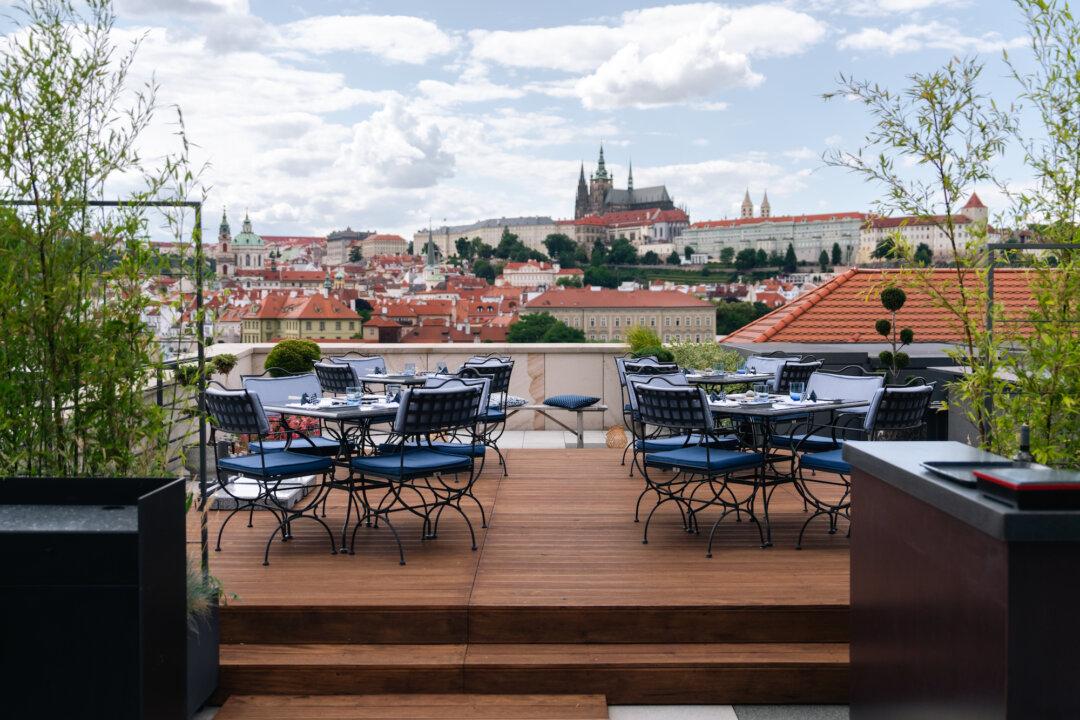In a city where unbelievable vistas are never hard to find, this one may be the very best. Sitting on a rooftop, awaiting dinner in a restaurant with just four tables, many of Prague’s greatest highlights were displayed before me. Not quite 360 degrees of beauty—but almost.
Just at our feet, the shining waters of the Vlatava River, the longest waterway in the country, whose magic, over the course of history, has inspired composers to write classical songs and symphonic poems. Ahead, the domes and spires of the Lesser Town. To the left, down below, was the stone span of the Charles Bridge, lined with statues, whose completion dates back to 1402. And up there, on the right, always the crowning feature of this famous, golden skyline, was the sprawling complex of the Prague Castle, staring down on everything from a rocky promontory.





